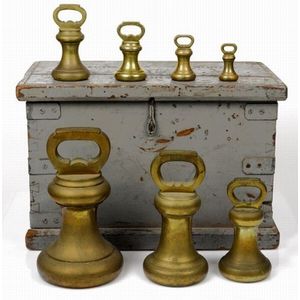1950s Gouda Ewer with Rialto Decor
A Gouda ewer, circa 1950s, with Pzh mark, pattern 4657, a 'Rialto' decor ewer with bold flower heads in russet and blue upon a brown and yellow spotted ground, blue and orange bands to the neck and base painted marks underside, height 22.5 cm
You must be a subscriber, and be logged in to view price and dealer details.
Subscribe Now to view actual auction price for this item
When you subscribe, you have the option of setting the currency in which to display prices to $Au, $US, $NZ or Stg.
This item has been sold, and the description, image and price are for reference purposes only.
- Ewer / Pitcher - A type of jug with a narrow neck bulbous body and wide spout, originally used for carrying and storing liquids such as water or wine. In medieval times they were the source of water to wash ones hands during and after a meal. later the shape was used for vessels in silver, gold, glass and ceramics.
In Victorian times they were made in ceramics and occasionally glass with a matching basin, and sometimes other accessories such as a soap holder or toothbrush holder. Their purpose was to provide facilities for personal washing In the early 19th century were often enclosed in purpose built stands, and later resided on a washstand..
Sometimes the words "ewer" and "pitcher" are used interchangably, but a pitcher is generally considered to be a jug, and would have a wide mouth, and a gently tapering body. - Decor Bois - "Decor bois" is a French term that translates to "wood decor" in English. It refers to decorative elements painted on porcelain items that simulate decorations in timber, such as carvings.
- Circa - A Latin term meaning 'about', often used in the antique trade to give an approximate date for the piece, usually considered to be five years on either side of the circa year. Thus, circa 1900 means the piece was made about 1900, probably between 1895 and 1905. The expression is sometimes abbreviated to c.1900.
This item has been included into following indexes:
Visually similar items

Large Chinese timber Buddha head, 78 cm high approx
Sold by
in
for
You can display prices in $Au, $US, $NZ or Stg.

Vintage cedar dining table on turned reeded legs, 152 x 88 cm, 75 cm high
Sold by
in
for
You can display prices in $Au, $US, $NZ or Stg.

A German 830 silver scalloped edge salver, late 19th century, maker Wilkens & Sohne, Bremen Hemelingen, diameter 27.5 cm, weight 328grams
Sold by
in
for
You can display prices in $Au, $US, $NZ or Stg.

Fitted box of seven brass weights, box stamped 'WEIGHTS AND MEASURES OFFICE TAMWORTH'. Weights range from 1lbs to 56 lbs.
Sold by
in
for
You can display prices in $Au, $US, $NZ or Stg.
